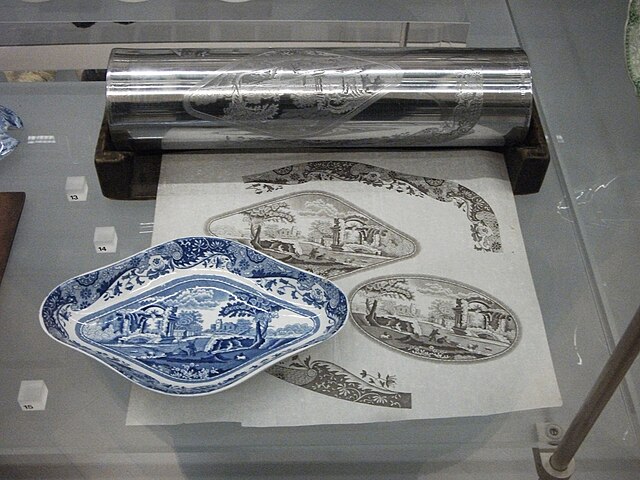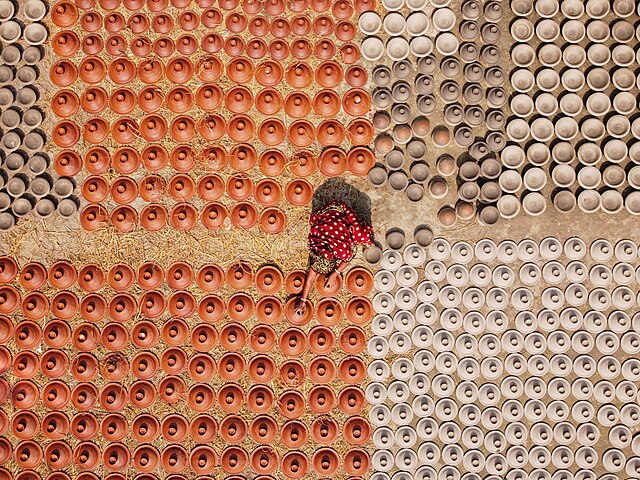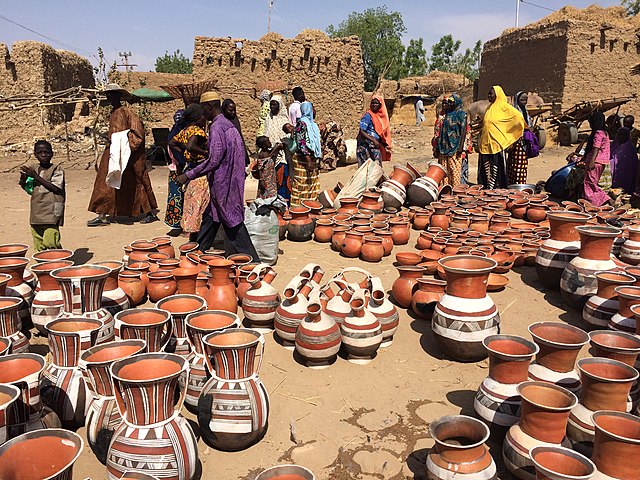Transfer printing is a method of decorating pottery or other materials using an engraved copper or steel plate from which a monochrome print on paper is taken which is then transferred by pressing onto the ceramic piece. Pottery decorated using this technique is known as transferware or transfer ware.
A typical platter from the heyday of transferware, 1820–50; an American scene ("Fair Mount near Philadelphia") in English earthenware Staffordshire pottery
A transfer-printed Wedgwood tea and coffee service. c. 1775, Staffordshire, Victoria & Albert Museum
A steel roller for transfer printing with the resulting end product
Tile designed by Walter Crane, c. 1890, made in Wheeling, West Virginia.
Pottery is the process and the products of forming vessels and other objects with clay and other raw materials, which are fired at high temperatures to give them a hard and durable form. The place where such wares are made by a potter is also called a pottery. The definition of pottery, used by the ASTM International, is "all fired ceramic wares that contain clay when formed, except technical, structural, and refractory products". End applications include tableware, decorative ware, sanitary ware, and in technology and industry such as electrical insulators and laboratory ware. In art history and archaeology, especially of ancient and prehistoric periods, pottery often means vessels only, and sculpted figurines of the same material are called terracottas.
Hand building a jar.
Finished pottery products kept for drying in the sun.
An 18th-century Chinese export porcelain service, for the America market
The pottery market in Boubon, Niger.








